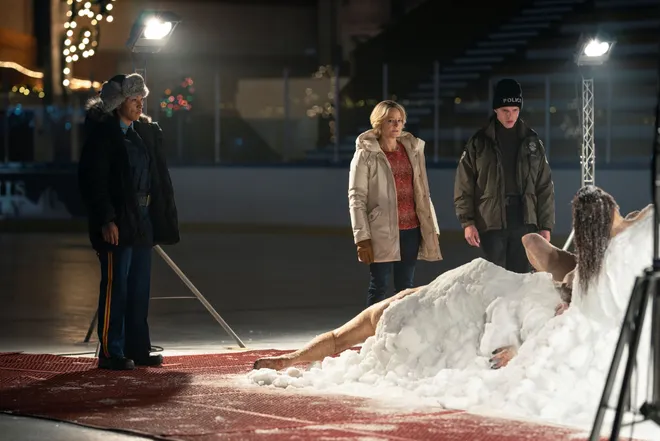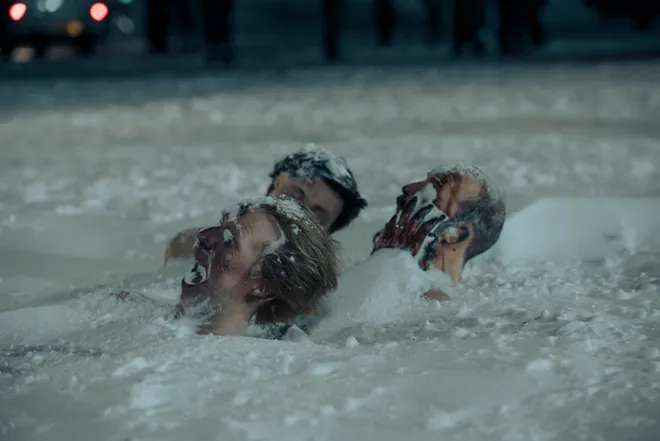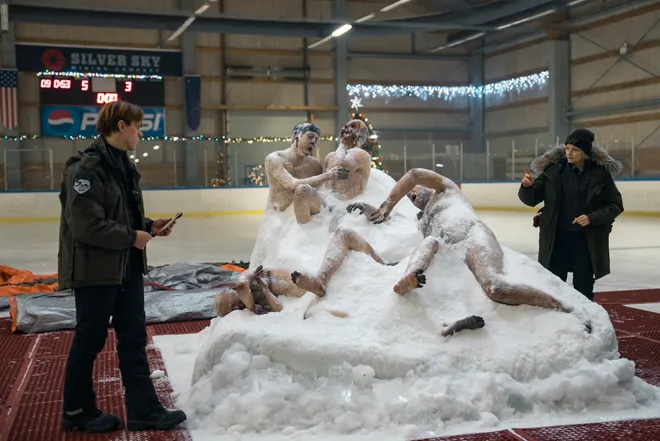That 'True Detective: Night Country' frozen 'corpsicle' is unforgettable, horrifying art
The "True Detective: Night Country" search for eight missing scientists from Alaska's Tsalal Arctic Research Station ends quickly – but with horrifying results.
Most of the terrified group had inexplicably run into the night, naked, straight into the teeth of a deadly winter storm in the critically acclaimed HBO series (Sundays, 9 EST/PST). The frozen block of bodies, each with faces twisted in agony, is discovered at the end of Episode 1 and revealed in full, unforgettable gruesomeness in this week's second episode.
Ennis, Alaska, police chief Liz Danvers (Jodie Foster), who investigates the mysterious death with state trooper Evangeline Navarro (Kali Reis), shoots down any mystical explanation for the seemingly supernatural scene.
"There's no Yetis," says Danvers. "Hypothermia can cause delirium. You panic and freeze and, voilà! corpsicle."
'True Detective' Jodie FosterKnew pro boxer Kali Reis was 'the one' to star in Season 4

Corpsicle is the darkly apt name for the grisly image, which becomes even more prominent when Danvers, with the help of chainsaw-wielding officers, moves the entire frozen crime scene to the local hockey rink to examine it as it thaws.
Bringing the apparition to the screen was "an obsession" for "Night Country" writer, director and executive producer Issa López.
"On paper, it reads great in the script, 'This knot of flesh and limbs frozen in a scream.' And they're naked," says López. "But everyone kept asking me, 'How are you going to show this?'"

López had her own "very dark" references, including art depicting 14th-century Italian poet Dante Alighieri's "Inferno," which shows the eternally damned writhing in hell. Other inspiration included Renaissance artworks showing twisted bodies, images the Mexican director remembered from her youth of mummified bodies and the "rat king," a term for a group of rats whose tails are bound and entangled in death.
López explained her vision to the "True Detective" production designers and the prosthetics team, Dave and Lou Elsey, who made the sculpture real. "I was like, 'Let's create something that is both horrifying but a piece of art in a way,'" López says.

The specter is so real-looking because it's made with a 3D printer scan of the actors who played the deceased scientists before it was sculpted with oil-based clay and cast in silicone rubber. The flesh color was added and the team "painted in every detail, every single hair, by hand," says López. "That was my personal obsession, that you could look at it so closely and it would look very real."
Reis says the scene was so lifelike in person that it gave her the chills and helped her get into character during scenes shot around the seemingly thawing mass. "This was created so realistically that I could imagine how this would smell," says Reis. "It helped create the atmosphere."
Foster says it was strange meeting the scientist actors when it came time to shoot flashback scenes. "When the real actors came, playing the parts of the people in the snow, that was weird," says Foster. "We had been looking at their faces the whole time."

Disclaimer: The copyright of this article belongs to the original author. Reposting this article is solely for the purpose of information dissemination and does not constitute any investment advice. If there is any infringement, please contact us immediately. We will make corrections or deletions as necessary. Thank you.







